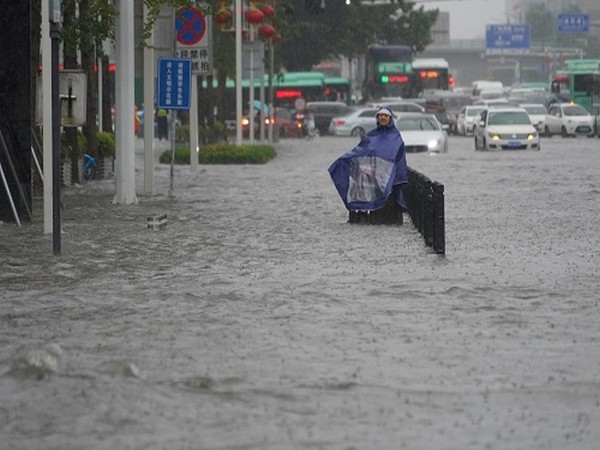Milan districts flooded, barrier saves Venice after Italian storms
Nov 01, 2023

Rome [Italy], November 1: Severe storms battered northern Italy during the night, leading to flooding in districts of Milan and forcing Venice to deploy its flood defence barrier.
The river Seveso burst its banks as a result of the large volume of water and flooded the districts of Isola and Niguarda north of Milan's city centre. Pictures and videos showed people standing knee-deep in water on the streets on Tuesday morning. Railway stations were flooded and entire streets were submerged.
There were no reports of casualties or deaths.
The rain as well as storms and thunderstorms are forecast to continue for the next few days, according to the authorities in the region of Lombardy.
The northern Italian regions of Emilia-Romagna, Friuli-Venezia Giulia, Liguria and Trentino-South Tyrol have been affected. In these regions, the warning levels yellow and orange declared by the Civil Defence Department are in effect. In some areas, schools remained closed as a precaution.
The fire brigade has already had to respond to many incidents since the early hours of Tuesday morning, carrying out more than 170 operations in Lombardy, it said.
As the rain is expected to continue, the authorities are very concerned that more rivers could burst their banks or that landslides could occur.
The emergency services are now taking precautionary measures to limit the impact of the storms. At Lake Como, which is popular with tourists and is also flooded as a result of the heavy rainfall, mobile barriers have been erected to stop the water from flowing into residential areas.
The northern Italian city of Venice narrowly avoided flooding on Monday evening, thanks to the deployment of its MOSE defence system.
Water at the southern dam of the Lido barrier island reached 154 centimetres above the normal level on Monday night, according to the city's data. The famous St Mark's Square becomes submerged when the water level is about 80 centimetres above the normal level, according to the city.
The MOSE system - from the Italian for Experimental Electromechanical Module - consists of 78 yellow gates installed at four entrances to Venice's lagoon and has been in operation since 2020.
When rain and storms cause water levels to rise, especially in the autumn, Venice raises the barriers, protecting the UNESCO World Heritage city from major high tides.
High tides and seawater can cause significant damage to the buildings. The highest water level recorded - 194 centimetres - was in 1966.
The high-water level late Monday was attributed to strong sirocco winds that originate in the Sahara and pick up speed across the Mediterranean.
Live images from the popular tourist city on Tuesday showed people walking across St Mark's Square as normal.
The last major "Acqua Alta" situation occurred in November 2022 when the water level reached about 170 centimetres above the normal level.
An Acqua Alta event - from the Italian for "high water" - is when the Adriatic sea level rises above 90 centimetres.
Source: Qatar Tribune









